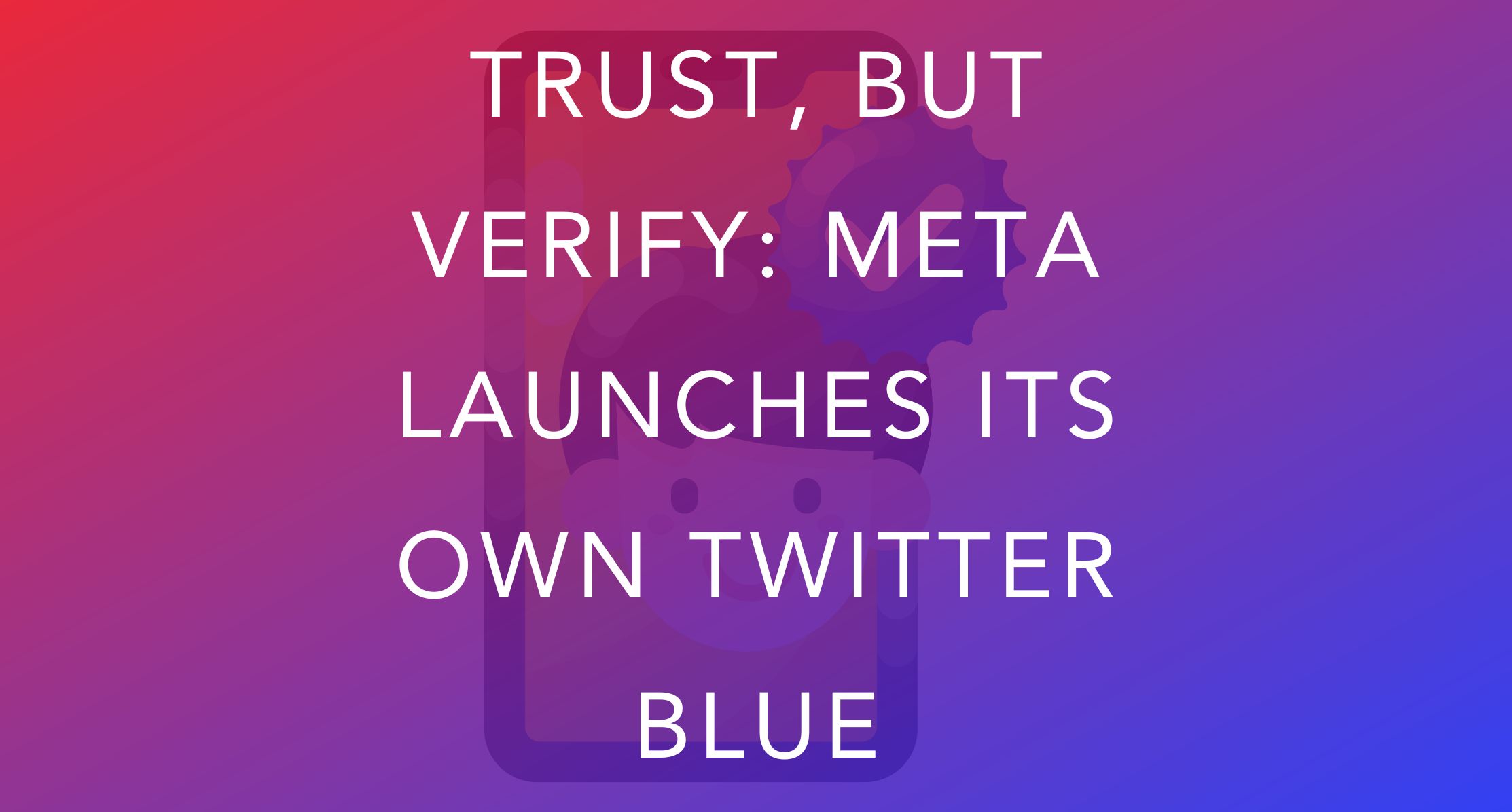Welp, it’s happened. Hot on the heels of Musk’s Twitter Blue paid program, the Zuck has announced that Meta is trialing a similar feature.
Meta Verified is a monthly paid subscription service that will reportedly come with a verification badge, customer support, active impersonation monitoring, comment prioritization in other people’s comments, recommendations in Explore and Reels, and exclusive stickers (fancy). You can check out a full overview straight from the horse’s mouth here. Adam Mosseri from Instagram also has a great breakdown of the service here (FYI, he hints that this is the first of a series of paid subscriptions…)Whew, boy.
If you’re worried about a repeat of the Twitter Blue fiasco from a few months back, the good news is that Meta is checking identities before handing out those blue checks. Verified users must be 18+ and will need to provide government ID that matches their Facebook or Instagram profile name and photo. Plus they’ll need to have a prior posting history.
Currently Meta Verified is being tested in Australia and New Zealand, with a global roll-out to follow. Costs will be US$11.99 if purchased through the web store, or US$14.99 if purchased through an iOS/Android app.
So how am I feeling about this? Well, a few ways:
-Real-time help is a game changer.
Okay, this is my fave bit, tbh. It’s HARD to get assistance on the interwebs these days, so knowing that Meta is being proactive about helping serious users and business accounts is a big deal. And apparently there will be actual people answering requests? Love it.
-Blue check = pay to play, not legit baller.
For ages, a blue check has been a status symbol signifying someone is a legit account with some kind of social street cred. This new approach waters down that credibility. It also poses an impersonation risk – and we know how hard it is to deal with those impersonators already.
-Improved visibility sounds good, but is it?
At first glance I love this. Hey, I’m all for showing up at the top of search lists and comment sections. It’s what every social media manager dreams of. But what happens when everyone is paying to be #1, rather than working their way to the top by creating quality, relevant content? I think there’s potential for a ton of spam and irrelevant results to end up crowding out comment sections and Explore pages. Fingers crossed that Meta finds a good balance here. *Cringes*
-How verified are we actually talking?
It’s definitely a pro that you can’t just pay a few bucks and claim to be whoever you want on the internet (although I’d totally love to be Rhianna for a day). Hopefully the system will weed out some of the imposters…but I am a bit worried that it’ll also encourage more scammers to come out of the woodwork.
-Why are WE paying for impersonation monitoring?
Allow me an “old man yells at cloud” moment, but I kind of feel that a multibillion-dollar company should be offering active impersonation monitoring as a built-in thing. It feels like a bad move that we’re expected to shoulder the costs of this responsibility. Money grab, much?
-Is this a pricing slippery slope?
I know, I know, if something’s free, then you’re the product. But with new fees for verified accounts and Twitter starting to charge for two-factor authentication (yes, a basic security feature), I think we might be staring down the barrel of a ton of social media upcharges. Time to shore up those owned newsletter lists! And look, while I love that verification is relatively low-cost and therefore accessible to regular people, the flip side is that because it’s so cheap we’ll all be vying for the same piece of that visibility pie while a giant company profits.
Obvs Meta Verified isn’t officially rolled out here yet, so I’m going to reserve judgment for now. (Got my judgy eye on you, tho, Zuck.) But all these sudden changes to the social media landscape are an important reminder that on social you don’t own your audience – which is why it’s so important to keep connecting the digital dots. Land those fans, then get them off social and over to your own website with your own newsletter.
Need help making that happen? Let’s talk.

